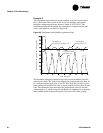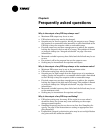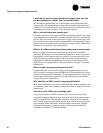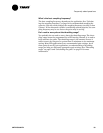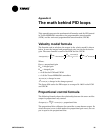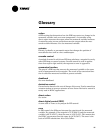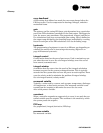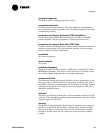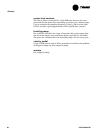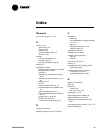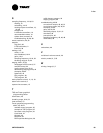
Glossary
CNT-APG002-EN 59
®
program frequency
The rate at which a program executes or cycles.
proportional control
Control action based on the error. The most important determinant in
how quickly the system responds to the error. Some applications use pro-
portional-only control.
proportional, integral, derivative (PID) calculation
The mathematical process that determines how quickly a controller
reaches setpoint. Compare proportional, integral, derivative loop.
proportional, integral, derivative (PID) loop
A control system that compares the setpoint and the measured variable to
calculate system output. See also measured variable. Compare propor-
tional, integral, derivative calculation.
resolution
See sensor resolution.
reverse action
See action.
sampling frequency
The rate at which the input signal in a PID loop is sampled. For Tracer
MP580/581 controllers, this occurs at the same rate or a multiple of the
rate of the program frequency. See also program frequency.
sensor resolution
The minimum change of a physical quantity, such as temperature or air-
flow, that causes a reliable reaction in the sensor. Typically, this value is
provided by the sensor manufacturer. If a thermistor can reliably report a
temperature change of 0.1°F (0.06°C), then any change less than that
should be considered noise.
setpoint
The point at which the desired value of the controlled variable is set. For
example, if the controlled variable is space temperature, then the cooling
setpoint might be 75°F (42°C).
staging
The process of organizing individual pieces of equipment into a group to
produce a single result. For example, a cooling tower might have three
fans used in stages to cool water. On a hot day, all three fans would be
needed to cool the water, but on a cooler day one or two fans would be
enough.



